|
|
|
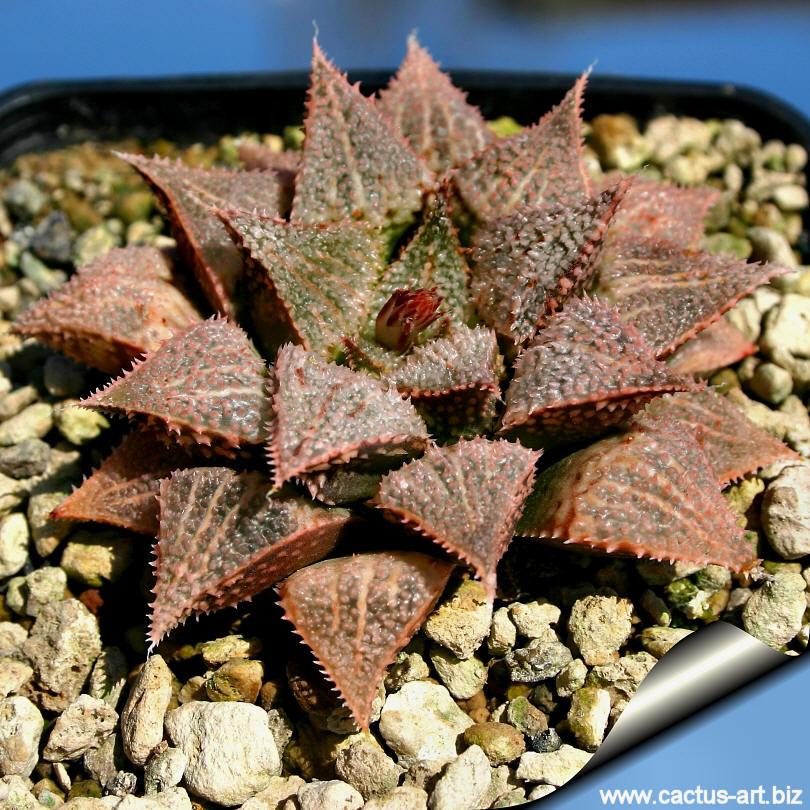
Haworthia emelyae var. major cv. HAKUMA
|
|
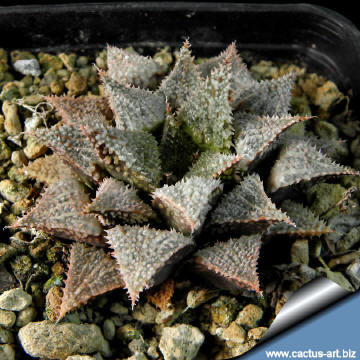 |
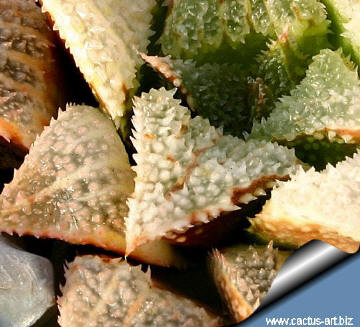
Leaf warts. The toothy texture of the silver leaves is
reminiscent of Haworthia emelyae var. major.
|
|
. |
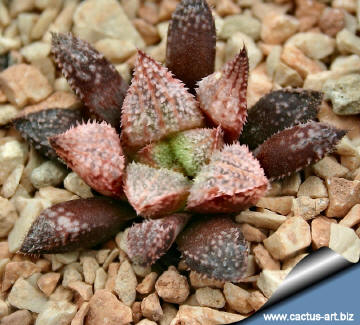
With some direct sun it will become
a lovely pink-red colour. |
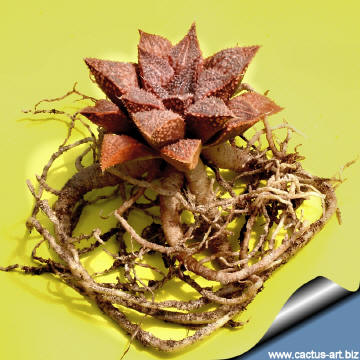 |
|
. |
|
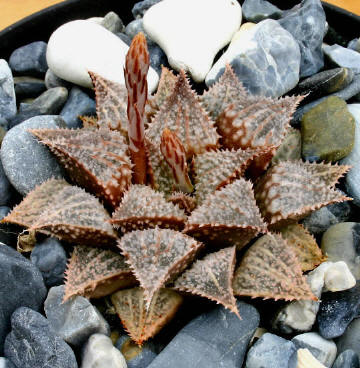 |
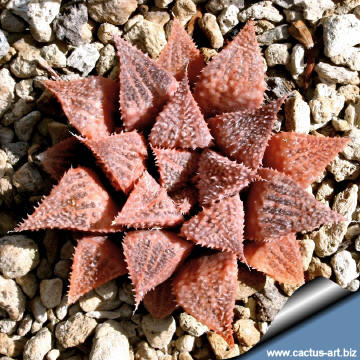 |
|
. |
|
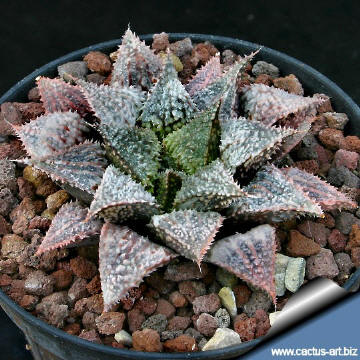 |
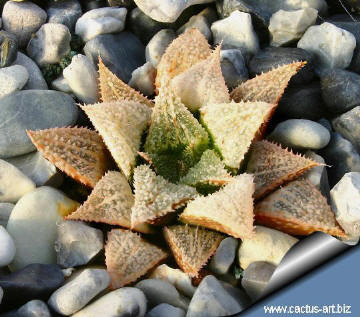
A rare variegated form in which the
predominant tone is the
yellowish-pink,
|
|
Photo of conspecific taxa, varieties, forms and
cultivars of Haworthia emalyae:
Advertising
|
|
|
|
|
Family: Asphodelaceae
(Aloacee - Liliaceae)
Origin:
Japan
(Nursery produced
cultivar)
Etymology:
The
genus "Haworthia" is
named after the British botanist Adrian Hardy
Haworth (1767–1833),
The
specific name "emelyae"was named
after Mrs. Emely Ferguson, Riversdale, RSA,
The cultivars name "Hakuma" is of Japanese origin.
|
|
Description: Haworthia 'Hakuma' is a fascinating Japanese
hybrid with small triangular rasp-like crystalline leaves with
tubercles, turning pinkish to brownish-red in good light. The toothy
texture of the silver leaves is reminiscent of Haworthia emelyae
var. major. The prize of this plant is due not only to its
indisputable beauty but also for being very slow growing (Slower than an
Ariocarpus fissuratus!).
This plant remain for a very long time solitary but may produce a few
basal shoots when very old (if any at all).
|
|
|
|
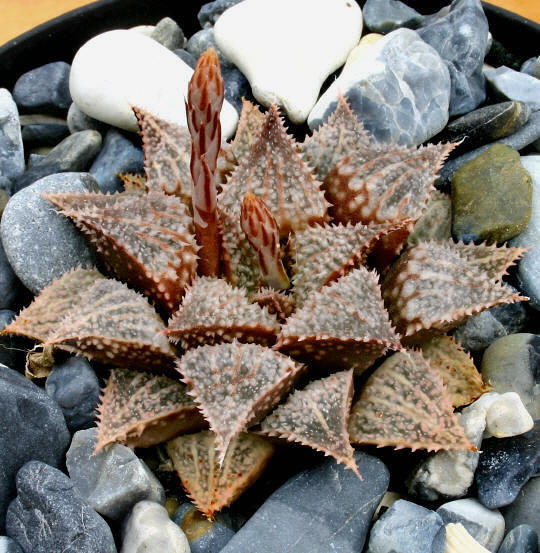
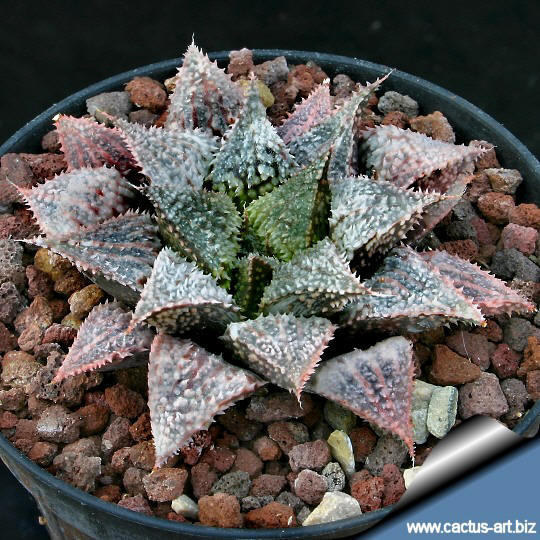
Plants grown in shadow are greener and quite different from the
ones grown in bright light.
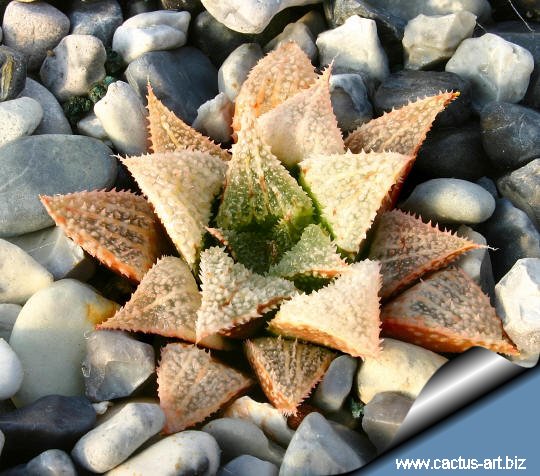
Cultivation:
Watering Needs
It needs
regular water,
but
do not water again until dry. Also, it is a species that is dormant in
the winter and requires
very little water (maybe even none) during the
cold months.
Frost Tolerance: Light frost protection required. Minimum of
5ºC for safe growing (but hardy up to -5°C or less.)
Sun Exposure: Requires light shade to bright light (protect
from strong midday sun). In shade the body colour will remain mostly
green, while full sun will darken and give it a rich pink-red body
colour. Can be sunburned if moved from shade/greenhouse into full sun
too quickly. The amount of sunlight it can withstand without scorching
depends upon the how hot it becomes in the summer in the location in
which it is planted. It will have more colour if it receives more light.
During the spring it may be able to take full sun until the heat arrives
at the end of spring. In an area that has hot afternoon sun, it may be
able to take full morning sun, but requires afternoon shade or afternoon
light shade. Needs a deep pot to accommodate the long, thick,
contractile roots.
Propagation: Offsets that appear at the
base between the
leaves; leave them
attached to form a cluster, or wait until they are 1/3 the size of the
parent and then detach and plant.

 |
|